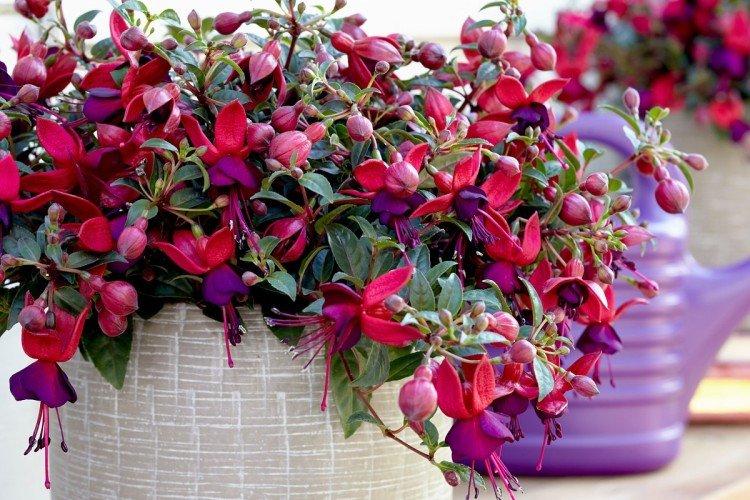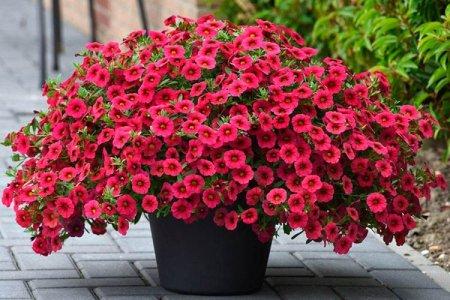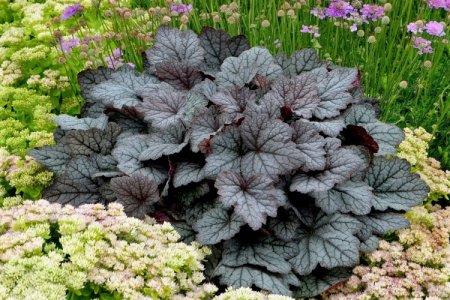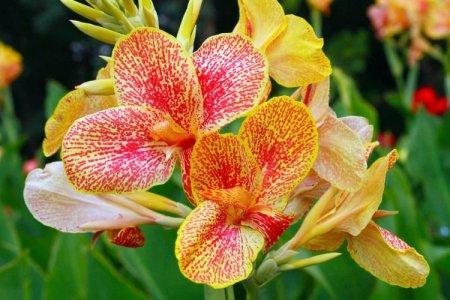
If you adore beautiful flowering plants, but are looking for something truly versatile - you will definitely love spectacular fuchsia! She feels great on the windowsill or in the garden, and you can even move her, depending on the season. The main features of the care remain unchanged!
general information
Fuchsia is a very beautiful decorative perennial that is widely used to decorate gardens, balconies and window sills. Depending on the variety, these can be bushes or creeping shoots. The shape of the leaves also depends on the specific variety, but most often they are opposite.
After flowering, bright large flowers turn into small, pretty fruits that resemble juicy berries. Decorative fuchsias can be grown as you like - in the form of a trunk, a bush or in ampelous form. She tolerates formation well and adapts to different conditions.

Fuchsia species
Dozens of fuchsia varieties are suitable for home cultivation. But to make it easier for you to navigate, we have selected the most popular types!
Three-leaf fuchsia
This is a neat bush up to 60 cm, which is well suited for ampel cultivation. Slightly drooping leaves up to 8 cm long cast a reddish color, and the flowers look like scarlet bells.

Sparkling fuchsia
One of the most decorative varieties with spectacular jagged leaves and bizarre pink-purple flowers. The fruits formed after flowering are even edible.

Bolivian fuchsia
The species is interesting primarily because the flowers are collected in huge bizarre bunches on the same impressive peduncle up to 30 cm in length. The most common varieties are red and white.

Recumbent fuchsia
A compact crawling look that landscape designers use to decorate lots. Bell flowers of all shades of pink and orange are always drawn towards the sun.

Thyroid fuchsia
A graceful and tall bush can often be found in offices and shop windows. Flowering lasts until October, and elongated buds of pink and purple shades are collected in a brush.

Magellanic fuchsia
A tall garden bush that grows up to 3 m and is densely covered with flowers from spring to autumn. It perfectly tolerates low temperatures and, when pruned, can even winter on a glazed balcony.

Graceful fuchsia
Large, spectacular flowers are held on such thin legs that it seems as if they are floating in the air. Even in indoor conditions, the flower can grow up to 1 m, and in the natural environment - several times more.

Ampel fuchsia
A very popular category combines cultivars with flexible cascading shoots. She is especially good at hanging flower pots with her clusters of buds that resemble small lanterns.

Fuchsia care
Fuchsia is often considered a capricious plant, but any experienced florist can argue with this statement. How can you call that a flower that easily adapts to almost any environment?
Temperature
Fuchsia does not like heat and stuffiness too much, so even indoor flowerpots in the summer are recommended to be taken out to the balcony or garden. The optimum temperature for a plant during the season is about 20 degrees.

Lighting
Wild fuchsias prefer forest and partial shade, so you can use this criterion when choosing a location. Choose areas with diffused sun or light shading, because direct sunlight is too aggressive for a delicate flower.

Watering
Fuchsia loves moisture and regular intensive watering. But at the same time, it does not tolerate stagnant water and begins to rot. Therefore, regardless of where the flower grows, first of all, good and high-quality drainage is needed. In season, you can sometimes spray the leaves. At the very end of autumn, watering and all water procedures are stopped.

The soil
Fuchsia does not like acidic soil, so choose neutral or slightly alkaline soil. If we are talking about an indoor flowerpot, there are ready-made soil mixtures for fuchsias. The soil must be light and nutritious enough, and do not forget to slightly loosen it after watering.

Fertilizers and feeding
Fuchsia spends a lot of resources on bud formation and flowering. Therefore, it must be fed at this time with special fertilizers for flowering plants. It is more convenient to use liquid mixtures while watering, and you can do this every week.

Pruning
When the fuchsia has faded, you can prune it before your winter break. And then - in the spring, before the start of a new growing season. Feel free to remove all weak, elongated, dry and crooked shoots and form a crown. It tolerates pruning well, so it can even be grown as a tree.

Transfer
It is recommended to replant fuchsia in the spring, and every year - for abundant flowering. After sanitary pruning, shorten the long healthy shoots, give the bush the desired shape, inspect the roots and transplant carefully. After the transplant, make sure that direct sunlight does not fall on it for a couple of days.

Fuchsia outdoors
If you want to transplant fuchsia outdoors, do it at the end of May. The depth of the hole should be such that the root collar is deepened by a maximum of 20 cm. After about 2-3 weeks, the flower will take root in a new place and begin to grow. Fuchsia is dug up for the winter, because it is thermophilic and does not survive frost.

Wintering
In order for fuchsia to bloom intensively in season, it needs a dormant period in winter. In November, the plants need to be moved to a cool room, watering should be reduced and left without bright lighting until spring. Even a basement or a heated garage will do. When the first frost has passed, the fuchsias can be trimmed lightly and taken back to the garden.

Planting and breeding
Fuchsia is hardly propagated by seeds in everyday life. It takes a long time, it is inconvenient, varietal qualities are lost, and the result turns into a lottery. It is most convenient to use cuttings. Pick a couple of healthy, lignified shoots and leave them in water or wet sand. Within 1.5 weeks you will see the first small roots.
For some varieties, grafting is a mandatory procedure. Basically, this applies to ampelous and bush species, because with age they grow and lose their decorative effect. Cutting every 3 years is necessary to renew the plant.
By the way, you can root the tops of the shoots that are left after pinching. If you are worried, you can cover the container with saplings with plastic wrap for the first time. But do not forget to air and spray it periodically.

Pest and disease control
Due to an excess of moisture in the soil, the strong white roots of fuchsia begin to rot. In this case, you need to dig up the plant, thoroughly rinse the roots with warm water, remove the damaged areas and root the flower again.
Gray mold affects different parts of the plant, resulting in soft, watery patches. Diseased leaves and shoots need to be cut off, the planting should be treated with fungicides and watering should be reduced.
Indoor fuchsias have another problem - the plant stops developing, and the roots are too confused with each other. This is a sure sign that the fuchsia is out of space and needs to be transplanted.
The most dangerous enemy of fuchsia is the whitefly, and it is very difficult to notice it. She lays eggs on the back of the leaves, which then eat the leaves and stems. You need to wash the flowers with soapy water and treat with insecticides.
Sometimes a spider mite appears, which covers the flowers with whitish cobwebs. And also - aphids, caterpillars and leaf nematodes that eat away the leaves between the veins. The methods of struggle are the same here.

Fuchsia - photo
There is no way to dispute the beauty of the vibrant and unusual fuchsia. Just look how good she is in any form and place!



























